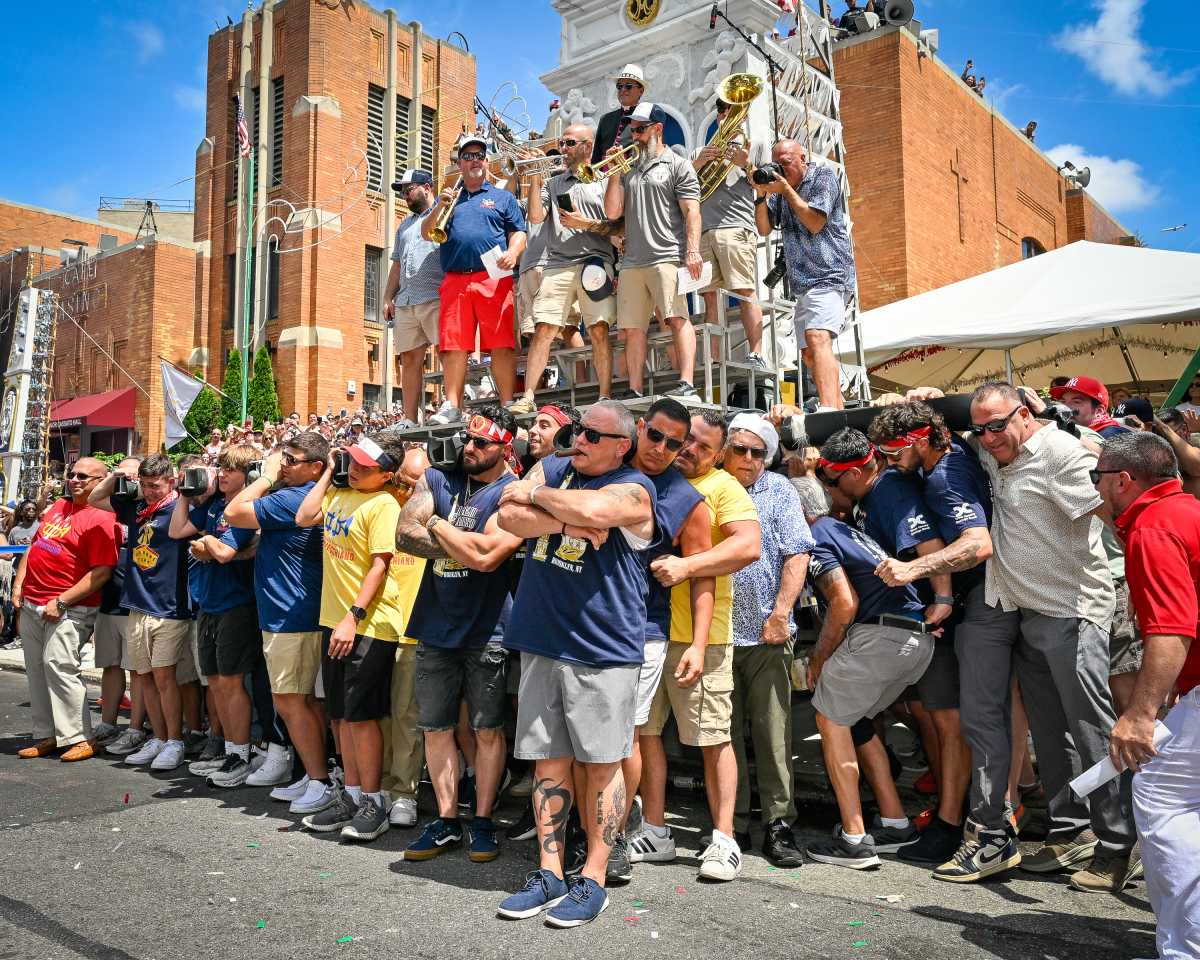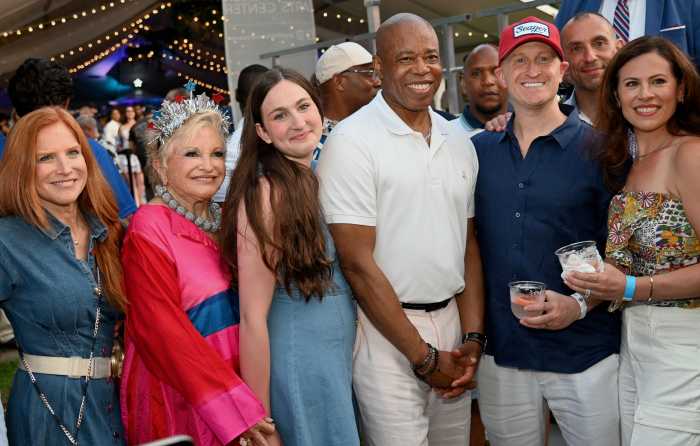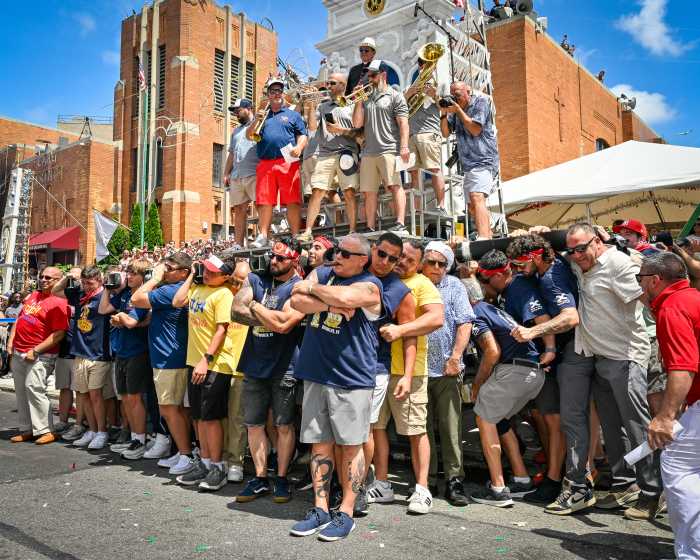By David Stanke
With plans for the World Trade Center site falling into place and 10-plus years of construction quickly approaching, there is a critical need for the Downtown public to register its interests and concerns. The Lower Manhattan Development Corp. is taking public comment on three very important documents with deadlines beginning Monday, March 15. Your response to one can ensure that work on the W.T.C. begins as quickly as possible. Your response on the other two can ensure that this country’s largest construction project is done with respect for neighboring communities. If public response to these documents is successful, the future vision of the W.T.C. will be worth waiting for and the path to get there will be tolerable.
To ensure that there are no further delays in the redevelopment, support the findings proposed by the L.M.D.C. The Section 106 process involves identification of historic properties, evaluation of a project’s impact on those historic properties, and resolution of adverse affects caused by the project. The proposed findings state that integrity of the site is preserved through the 4 1/2 acre park along with access to box column beams on the bathtub floor and to a portion of the bathtub wall. Other ruins, such as parking lot levels and an elevator station, are not considered critical to the historic nature of the site. In short, the proposed finding is that the dedication of a vast memorial complex satisfies the requirements of preservation and that construction should move forward.
If you agree with this statement, go to the L.M.D.C. Web site and register your support. Why is this support needed? Because there are parties interested in using the Section 106 process to slow down redevelopment of the site. These parties include a group of dedicated family members who apparently believe their pain entitles them to ultimate control over details of redevelopment. They have studied legal intricacies of the process in ways that are beyond the reach residential community organizations. They have threatened legal action if they do not agree with the findings. They may use the Section 106 process to stop the recovery of the W.T.C. The definition of historic significance and respectful preservation is completely subjective. The experts need to hear from the broader population.
The other documents up for comment are the Draft Generic Environmental Impact Statement and the Amended General Project Plan (comments to any of the three documents can be made at www.renewnyc.com by clicking Environmental Plan/Review link). This D.G.E.I.S. considers the impact of redevelopment of the whole W.T.C. site (memorial, commercial, and transportation) on surrounding communities and the deadline for comments, like Section 106, is March 15. The A.G.P.P., with a comment deadline of March 19, is an overview of the site layout and uses. The next 10 to 15 years will be defined by a construction project that will have dramatic impact on living conditions in the area. On the plus side, we will witness an inspiring effort to recover from a devastating act of hatred. On the down side, we will face noise, construction dust and debris, traffic congestion, pedestrian challenges, changes in land use, security issues, and so on.
The “Executive Summary” of the D.G.E.I.S. is 72 pages and the document itself has 23 sections. It is beyond the capacity of the general public to respond to this in a meaningful way, and yet its contents are critical to our quality of life. There is no way that such documents can accurately or fully assess the impact of this project. That is not anyone’s fault; it’s reality. Does the document underestimate the impact in some areas? Probably? But what are the alternatives? If we want a new Trade Center, we are going to have to deal with some painful externalities of construction, in the same way we have to work to buy a TV or exercise to have a strong heart.
Based on these realities, I suggest that the public demand a small, funded group tasked with monitoring the progress and impact of these projects from a livability perspective. This group can review the situation as it unfolds, identify the most serious problems, and work with development officials to reduce the pain while enabling progress. This group would have to be carefully structured and staffed to walk the fine line between developers and community. If successful, it will be instrumental in guiding Downtown through an inspiring rebirth. If it fails, Downtown could be critically damaged and take years after the completion of construction to get back into full stride. Remember how long it took for Downtown to fully realize the benefits of the original W.T.C.? All of us should be dedicated to doing it better and faster this time. The proper level of community involvement can contribute to this.
Finally, I would recommend that everyone with specific concerns about development plans register them in response to the D.G.E.I.S. and A.G.P.P. Here are my suggestions for comments on the documents:
The L.M.D.C. proposed findings of the 106 process are appropriate. The memorial and related program elements go well beyond preserving the historic significance of the site and border on perpetuating the damage originally intended by the attacks. Artifacts remaining on the site (the slurry wall and W.T.C. beams) do not justify broad preservation.
Keep West St. at grade. A better cost/benefit analysis is required to justify burying West St. The benefits from this project to justify the approximately. $1 billion cost and transportation havoc have never been communicated.
Restrict vehicular access to the W.T.C. site. Vehicles detract from the street level pedestrian experience and introduce congestion. They also limit the viable size of sidewalks. Fulton and Greenwich Sts. provide more than sufficient street access.
Locate the bus parking facility be located at the W.T.C. site rather than in surrounding residential communities. This is the least expensive and most convenient option.
Use environmentally friendly equipment for all work on the site.
A simple action now can get things moving in the right direction and ensure that the next 5 to 10 years are bearable and the results are successful. Draw from suggestions above or make other suggestions that you consider fundamental to the future success of the site.
David Stanke is co-president of BPC United and can be reached at bpcunited@ebond.com.
Reader Services































